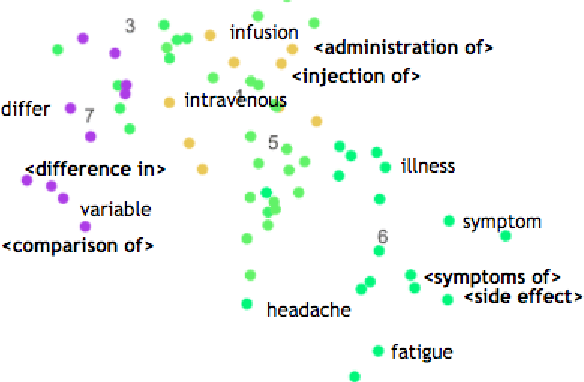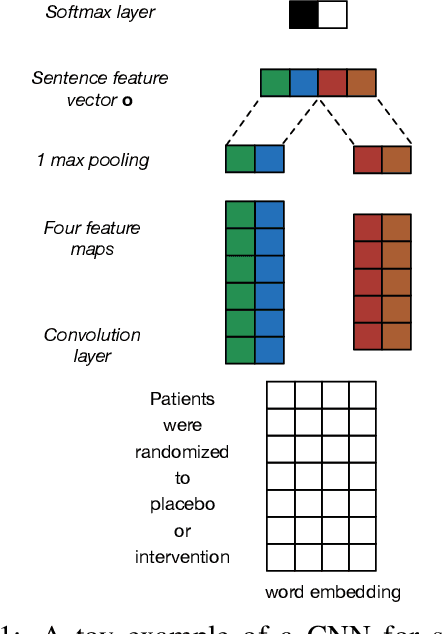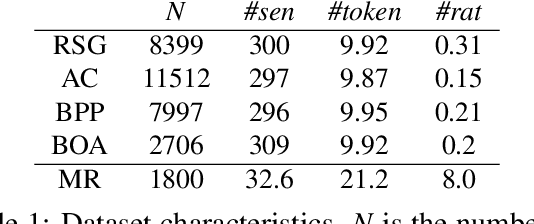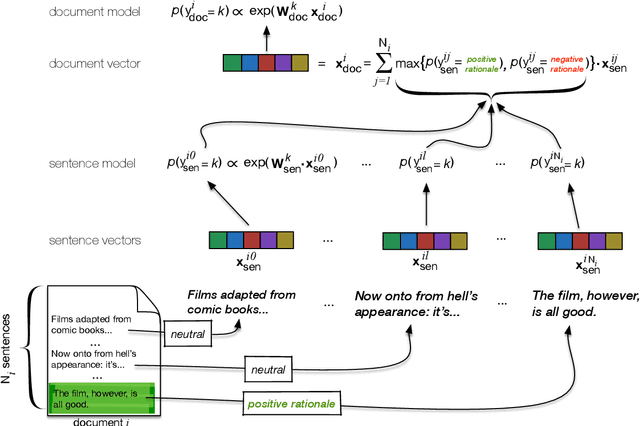Iain Marshall
Syntactic Patterns Improve Information Extraction for Medical Search
Apr 30, 2018



Abstract:Medical professionals search the published literature by specifying the type of patients, the medical intervention(s) and the outcome measure(s) of interest. In this paper we demonstrate how features encoding syntactic patterns improve the performance of state-of-the-art sequence tagging models (both linear and neural) for information extraction of these medically relevant categories. We present an analysis of the type of patterns exploited, and the semantic space induced for these, i.e., the distributed representations learned for identified multi-token patterns. We show that these learned representations differ substantially from those of the constituent unigrams, suggesting that the patterns capture contextual information that is otherwise lost.
Rationale-Augmented Convolutional Neural Networks for Text Classification
Sep 24, 2016



Abstract:We present a new Convolutional Neural Network (CNN) model for text classification that jointly exploits labels on documents and their component sentences. Specifically, we consider scenarios in which annotators explicitly mark sentences (or snippets) that support their overall document categorization, i.e., they provide rationales. Our model exploits such supervision via a hierarchical approach in which each document is represented by a linear combination of the vector representations of its component sentences. We propose a sentence-level convolutional model that estimates the probability that a given sentence is a rationale, and we then scale the contribution of each sentence to the aggregate document representation in proportion to these estimates. Experiments on five classification datasets that have document labels and associated rationales demonstrate that our approach consistently outperforms strong baselines. Moreover, our model naturally provides explanations for its predictions.
 Add to Chrome
Add to Chrome Add to Firefox
Add to Firefox Add to Edge
Add to Edge